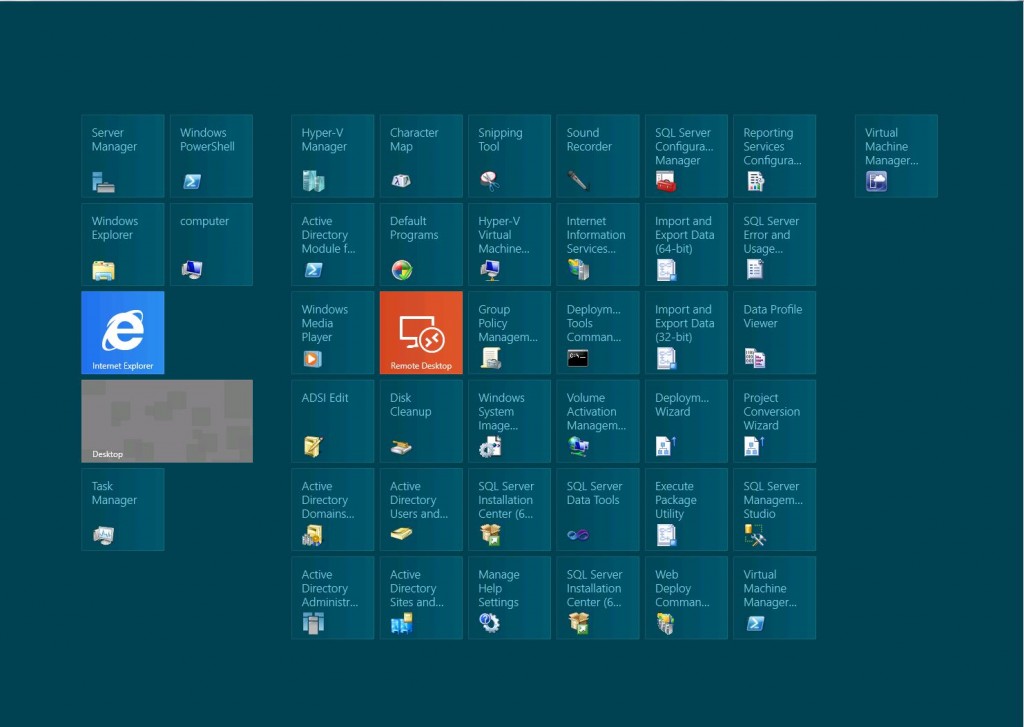1.4K
With the release of Microsoft’s new operating system just on the horizon, the company is taking a simpler approach to how they sell the product. Unlike previous iterations, Microsoft is cutting down on the number of different SKU’s that will be released for Windows 8, and Windows Server 2012. This means Microsoft is creating a simpler product line, with fewer differences in capability. In particular, Microsoft is releasing only four different Windows Server 2012 SKU’s with a strong emphasis put on virtualization.
From the four versions, Datacenter and Standard will be the key players. In the past microsoft has varied the capabilities of its servers greatly depending on the version. This variation came in the form of limiting the cheaper OS to lesser hardware requirements, to clustering capabilities. This is no longer the case with Windows Server 2012, as both Standard and Datacenter will be equally capable- similar hardware requirements and software capabilities, with the only difference in virtualization rights.
Windows Server 2012 Standard Edition will be limited to two virtual machines, in addition to the host operating system, and the Datacenter version will be able to run on an unlimited number of virtual machines. Windows Server 2008 licences ( Enterprise, Web, and HCP) will all be replaced by Server 2012 Standard and Datacenter licenses, and users will be able to upgrade at $882, and $4,809 respectively.
In addition to Standard and Datacenter, Microsoft is also releasing two limited capability versions, Server 2012 “Essentials” (priced at $425) and “Foundation”, an OEM-only version bound to physical hardware; Foundation cannot run in a virtual machine. Essentials will be able to run in a virtual machine and physical hardware, but will not be able to do so simultaneously like standard and Datacenter. These limited versions of Server 2012 are intended to replace Microsoft’s Small Business Servers- both Essential and Standard.
With the end of Small business Server Microsoft is pushing its users to the cloud and wants the limited capability Server 2012 to be used in tandem with cloud services like office 365. This is surly going to be a blow to small businesses that are not yet ready to make the leap into the cloud and will have many companies and organizations evaluate their options.
We can expect Server 2012 to be released along side Windows 8 late this year, or early next. For those who are itching to try out either Windows 8 or Server 2012 you can download the official release candidate from Microsoft, and see if your ready to upgrade when its released.
With the release of Microsoft’s new operating system just on the horizon, the company is taking a simpler approach to how they sell the product. Unlike previous iterations, Microsoft is cutting down on the number of different SKU’s that will be released for Windows 8, and Windows Server 2012. This means Microsoft is creating a simpler product line, with fewer differences in capability. In particular, Microsoft is releasing only four different Windows Server 2012 SKU’s with a strong emphasis put on virtualization.
From the four versions, Datacenter and Standard will be the key players. In the past microsoft has varied the capabilities of its servers greatly depending on the version. This variation came in the form of limiting the cheaper OS to lesser hardware requirements, to clustering capabilities. This is no longer the case with Windows Server 2012, as both Standard and Datacenter will be equally capable- similar hardware requirements and software capabilities, with the only difference in virtualization rights.
Windows Server 2012 Standard Edition will be limited to two virtual machines, in addition to the host operating system, and the Datacenter version will be able to run on an unlimited number of virtual machines. Windows Server 2008 licences ( Enterprise, Web, and HCP) will all be replaced by Server 2012 Standard and Datacenter licenses, and users will be able to upgrade at $882, and $4,809 respectively.
In addition to Standard and Datacenter, Microsoft is also releasing two limited capability versions, Server 2012 “Essentials” (priced at $425) and “Foundation”, an OEM-only version bound to physical hardware; Foundation cannot run in a virtual machine. Essentials will be able to run in a virtual machine and physical hardware, but will not be able to do so simultaneously like standard and Datacenter. These limited versions of Server 2012 are intended to replace Microsoft’s Small Business Servers- both Essential and Standard.
With the end of Small business Server Microsoft is pushing its users to the cloud and wants the limited capability Server 2012 to be used in tandem with cloud services like office 365. This is surly going to be a blow to small businesses that are not yet ready to make the leap into the cloud and will have many companies and organizations evaluate their options.
We can expect Server 2012 to be released along side Windows 8 late this year, or early next. For those who are itching to try out either Windows 8 or Server 2012 you can download the official release candidate from Microsoft, and see if your ready to upgrade when its released.
